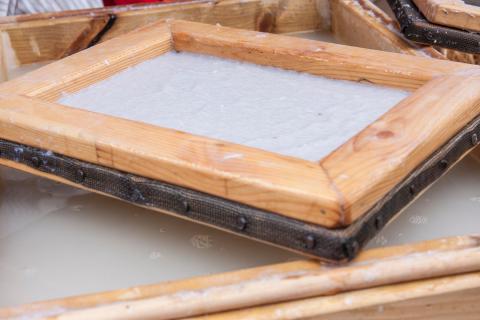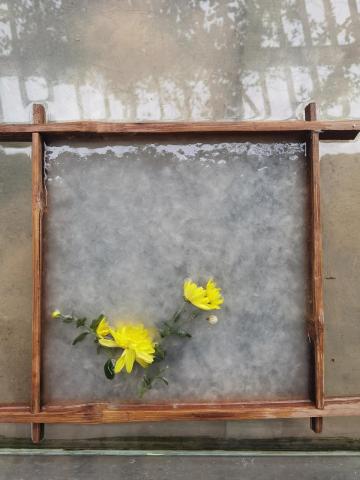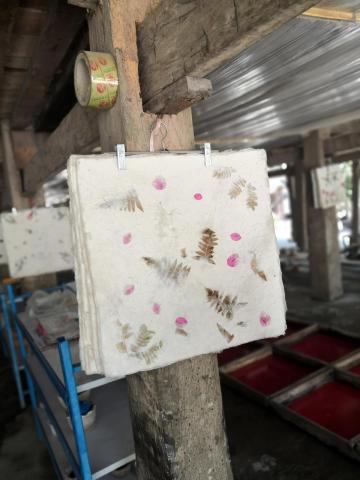Papermaking is one of the four great inventions of ancient China, dating back nearly 2,000 years. The complete process, invented by Cai Lun in the Eastern Han Dynasty, is still used in hand-made papermaking practices of today in Mangtuan Village of Mengding Town, earning the title of a “living fossil” of ancient Chinese papermaking. Mangtuan-based papermaking features in the “First List of National Intangible Cultural Heritage” by the Ministry of Culture of the People's Republic of China.

The Dai people in Mangtuan Village have 600 years of papermaking heritage. The raw material for papermaking is bark of paper mulberry and called “Maisha” by the Dai people.
The papermaking process completely preserves the historical inheritance of the original composition of ancient papermaking. It is composed of 11 processes: material selecting, material drying, soaking, ash mixing, cooking, washing, beating, paper pouring, paper airing, rolling and paper drying. No chemicals are added in the process.
Historically, the bark-made paper was mainly sent to the Buddhist temple for the purpose of copying scriptures, recording the history and culture of the Yi people; or issuing notices, official documents and employment documents made by the head of minorities in Yunnan; or framed picture scroll of dragons and phoenixes, elephants, horses, deer and so on.
Today, the paper produced has more of a commercial value. Mangtuan-based papermaking has earned a far-reaching reputation in the field of art. Thanks to the special grains and texture of the handmade paper, Mangtuan-based paper is extremely suitable for writing calligraphy and drawing ink paintings.

Merchants producing tea favour Mangtuan-based paper for packing. It demonstrates the deep and rich tea history and simple and luxurious quality, while expressing sincere wishes to those who buy the tea.
These days, young people are also innovating with this historic papermaking process. Fresh flowers and leaves are inlaid into handmade paper according individual, bespoke design patterns. These papers are made into notepads, desk lamps and fans. The flowers and leaves decorate the story of the paper, and the paper lays out the life of flowers and leaves.


